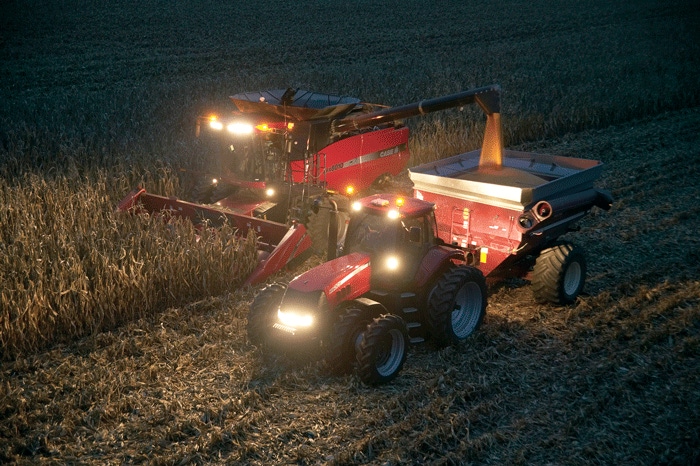
The U.S. corn harvest is moving closer to completion, but nearly a quarter of the crop is still in the ground, according to the latest USDA crop progress report, out Monday afternoon.
Corn harvest progress is now at 76% as of November 17, up from 66% a week ago. That is just below analyst estimates of 77% and still moderately behind 2018’s pace of 89% and the five-year average of 92%, however.
Three states – North Dakota (23%), Michigan (39%) and Wisconsin (44%) – still haven’t cleared the halfway point at this time. Meantime, USDA reports two southern states (North Carolina and Tennessee) have wrapped up their respective harvests.
Soybean harvest is a bit further along, moving from 85% complete a week ago to 91% as of November 17, with USDA marking one state (Louisiana) as 100% complete at this time. That matches analyst expectations as well as 2018’s pace, although 2019 progress is still a bit behind the five-year average of 95%.
Farther south, the U.S. cotton harvest moved from 62% complete a week ago up to 68%. That’s moderately ahead of 2018’s pace of 58% and slightly better than the five-year average of 66%.
The U.S. sorghum harvest is even further along, moving from 88% complete a week ago up to 93%. That keeps it ahead of 2018’s pace of 79% and the five-year average of 87%.
The 2019/20 winter wheat crop is nearly all planted at this time, moving from 92% complete a week ago up to 95%. That’s slightly ahead of 2018’s pace of 92% and in line with the five-year average of 95%. And 83% of the crop is now emerged.
As expected, USDA docked crop quality for a second consecutive week, moving the percentage in good-to-excellent condition from 54% down to 52%. Another 34% of the crop is rated fair (up a point from last week), with the remaining 14% rated poor or very poor (also up a point from last week). Some areas in the Central Plains and east of the Mississippi River are languishing below the national average, which was pulled up by better-performing crops farther west.
Click here to read the latest USDA crop progress report in its entirety.
About the Author(s)
You May Also Like






